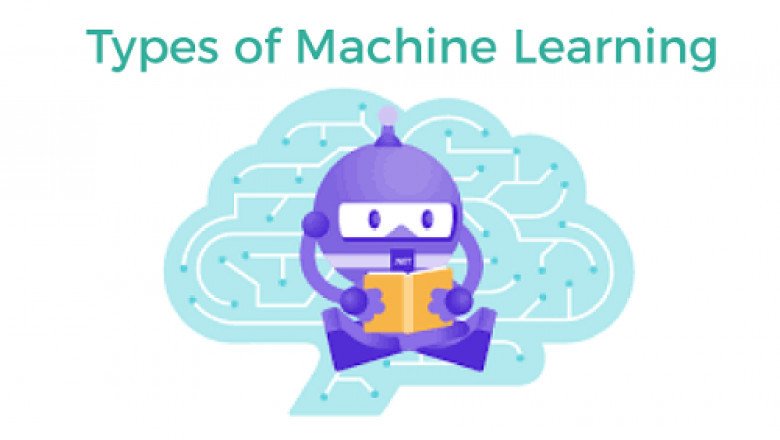
views
Types of Machine Learning - Javatpoint
Machine learning is a subset of AI, which enables the machine to automatically learn from data, improve performance from past experiences, and make predictions. Machine learning contains a set of algorithms that work on a huge amount of data. Data is fed to these algorithms to train them, and on the basis of training, they build the model & perform a specific task.
These ML algorithms help to solve different business problems like Regression, Classification, Forecasting, Clustering, and Associations, etc.
Based on the methods and way of learning, machine learning is divided into mainly four types, which are:
In this topic, we will provide a detailed description of the types of Machine Learning along with their respective algorithms:
As its name suggests, Supervised machine learning is based on supervision. It means in the supervised learning technique, we train the machines using the "labelled" dataset, and based on the training, the machine predicts the output. Here, the labelled data specifies that some of the inputs are already mapped to the output. More preciously, we can say; first, we train the machine with the input and corresponding output, and then we ask the machine to predict the output using the test dataset.
Let's understand supervised learning with an example. Suppose we have an input dataset of cats and dog images. So, first, we will provide the training to the machine to understand the images, such as the shape & size of the tail of cat and dog, Shape of eyes, colour, height (dogs are taller, cats are smaller), etc. After completion of training, we input the picture of a cat and ask the machine to identify the object and predict the output. Now, the machine is well trained, so it will check all the features of the object, such as height, shape, colour, eyes, ears, tail, etc., and find that it's a cat. So, it will put it in the Cat category. This is the process of how the machine identifies the objects in Supervised Learning.
The main goal of the supervised learning technique is to map the input variable(x) with the output variable(y). Some real-world applications of supervised learning are Risk Assessment, Fraud Detection, Spam filtering, etc.
Supervised machine learning can be classified into two types of problems, which are given below:
Classification algorithms are used to solve the classification problems in which the output variable is categorical, such as "Yes" or No, Male or Female, Red or Blue, etc. The classification algorithms predict the categories present in the dataset. Some real-world examples of classification algorithms are Spam Detection, Email filtering, etc.
Some popular classification algorithms are given below:
Regression algorithms are used to solve regression problems in which there is a linear relationship between input and output variables. These are used to predict continuous output variables, such as market trends, weather prediction, etc.
Some popular Regression algorithms are given below:
Advantages:
Disadvantages:
Some common applications of Supervised Learning are given below:
Unsupervised learning is different from the Supervised learning technique; as its name suggests, there is no need for supervision. It means, in unsupervised machine learning, the machine is trained using the unlabeled dataset, and the machine predicts the output without any supervision.
In unsupervised learning, the models are trained with the data that is neither classified nor labelled, and the model acts on that data without any supervision.
The main aim of the unsupervised learning algorithm is to group or categories the unsorted dataset according to the similarities, patterns, and differences. Machines are instructed to find the hidden patterns from the input dataset.
Let's take an example to understand it more preciously; suppose there is a basket of fruit images, and we input it into the machine learning model. The images are totally unknown to the model, and the task of the machine is to find the patterns and categories of the objects.
So, now the machine will discover its patterns and differences, such as colour difference, shape difference, and predict the output when it is tested with the test dataset.
Unsupervised Learning can be further classified into two types, which are given below:
The clustering technique is used when we want to find the inherent groups from the data. It is a way to group the objects into a cluster such that the objects with the most similarities remain in one group and have fewer or no similarities with the objects of other groups. An example of the clustering algorithm is grouping the customers by their purchasing behaviour.
Some of the popular clustering algorithms are given below:
Association rule learning is an unsupervised learning technique, which finds interesting relations among variables within a large dataset. The main aim of this learning algorithm is to find the dependency of one data item on another data item and map those variables accordingly so that it can generate maximum profit. This algorithm is mainly applied in Market Basket analysis, Web usage mining, continuous production, etc.
Some popular algorithms of Association rule learning are Apriori Algorithm, Eclat, FP-growth algorithm.
Advantages:
Disadvantages:
Semi-Supervised learning is a type of Machine Learning algorithm that lies between Supervised and Unsupervised machine learning. It represents the intermediate ground between Supervised (With Labelled training data) and Unsupervised learning (with no labelled training data) algorithms and uses the combination of labelled and unlabeled datasets during the training period.
Although Semi-supervised learning is the middle ground between supervised and unsupervised learning and operates on the data that consists of a few labels, it mostly consists of unlabeled data. As labels are costly, but for corporate purposes, they may have few labels. It is completely different from supervised and unsupervised learning as they are based on the presence & absence of labels.
To overcome the drawbacks of supervised learning and unsupervised learning algorithms, the concept of Semi-supervised learning is introduced. The main aim of semi-supervised learning is to effectively use all the available data, rather than only labelled data like in supervised learning. Initially, similar data is clustered along with an unsupervised learning algorithm, and further, it helps to label the unlabeled data into labelled data. It is because labelled data is a comparatively more expensive acquisition than unlabeled data.
We can imagine these algorithms with an example. Supervised learning is where a student is under the supervision of an instructor at home and college. Further, if that student is self-analysing the same concept without any help from the instructor, it comes under unsupervised learning. Under semi-supervised learning, the student has to revise himself after analyzing the same concept under the guidance of an instructor at college.
Advantages:
Disadvantages:
Reinforcement learning works on a feedback-based process, in which an AI agent (A software component) automatically explore its surrounding by hitting & trail, taking action, learning from experiences, and improving its performance. Agent gets rewarded for each good action and get punished for each bad action; hence the goal of reinforcement learning agent is to maximize the rewards.
In reinforcement learning, there is no labelled data like supervised learning, and agents learn from their experiences only.
The reinforcement learning process is similar to a human being; for example, a child learns various things by experiences in his day-to-day life. An example of reinforcement learning is to play a game, where the Game is the environment, moves of an agent at each step define states, and the goal of the agent is to get a high score. Agent receives feedback in terms of punishment and rewards.
Due to its way of working, reinforcement learning is employed in different fields such as Game theory, Operation Research, Information theory, multi-agent systems.
A reinforcement learning problem can be formalized using Markov Decision Process(MDP). In MDP, the agent constantly interacts with the environment and performs actions; at each action, the environment responds and generates a new state.
Reinforcement learning is categorized mainly into two types of methods/algorithms:
Advantages
Disadvantage
The curse of dimensionality limits reinforcement learning for real physical systems.
Splunk
SPSS
Swagger
Transact-SQL
Tumblr
ReactJS
Regex
Reinforcement Learning
R Programming
RxJS
React Native
Python Design Patterns
Python Pillow
Python Turtle
Keras
Aptitude
Reasoning
Verbal Ability
Interview Questions
Company Questions
Artificial Intelligence
AWS
Selenium
Cloud Computing
Hadoop
ReactJS
Data Science
Angular 7
Blockchain
Git
Machine Learning
DevOps
DBMS
Data Structures
DAA
Operating System
Computer Network
Compiler Design
Computer Organization
Discrete Mathematics
Ethical Hacking
Computer Graphics
Software Engineering
Web Technology
Cyber Security
Automata
C Programming
C++
Java
.Net
Python
Programs
Control System
Data Mining
Data Warehouse
JavaTpoint offers too many high quality services. Mail us on [email protected], to get more information about given services.
JavaTpoint offers college campus training on Core Java, Advance Java, .Net, Android, Hadoop, PHP, Web Technology and Python. Please mail your requirement at [email protected]
Duration: 1 week to 2 week
Website Development
Android Development
Website Designing
Digital Marketing
Summer Training
Industrial Training
College Campus Training
Address: G-13, 2nd Floor, Sec-3
Noida, UP, 201301, India
Contact No: 0120-4256464, 9990449935
© Copyright 2011-2021 www.javatpoint.com. All rights reserved. Developed by JavaTpoint.












Comments
0 comment